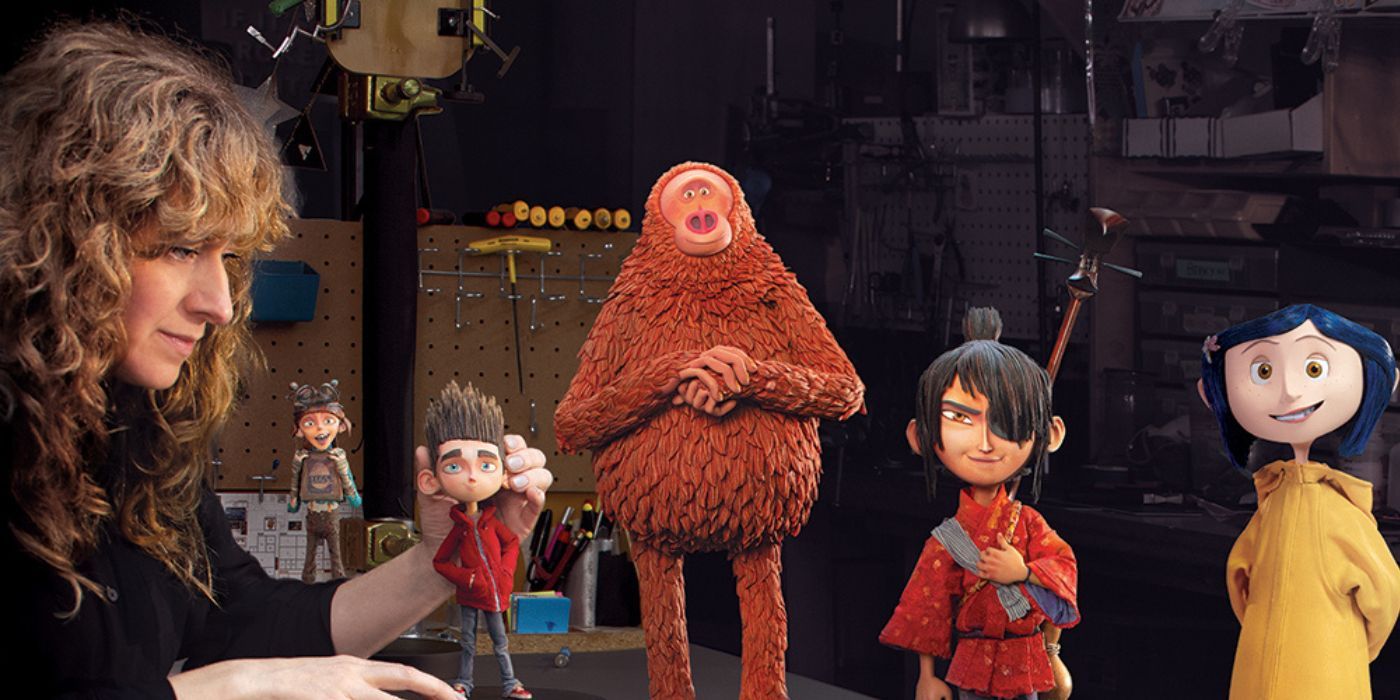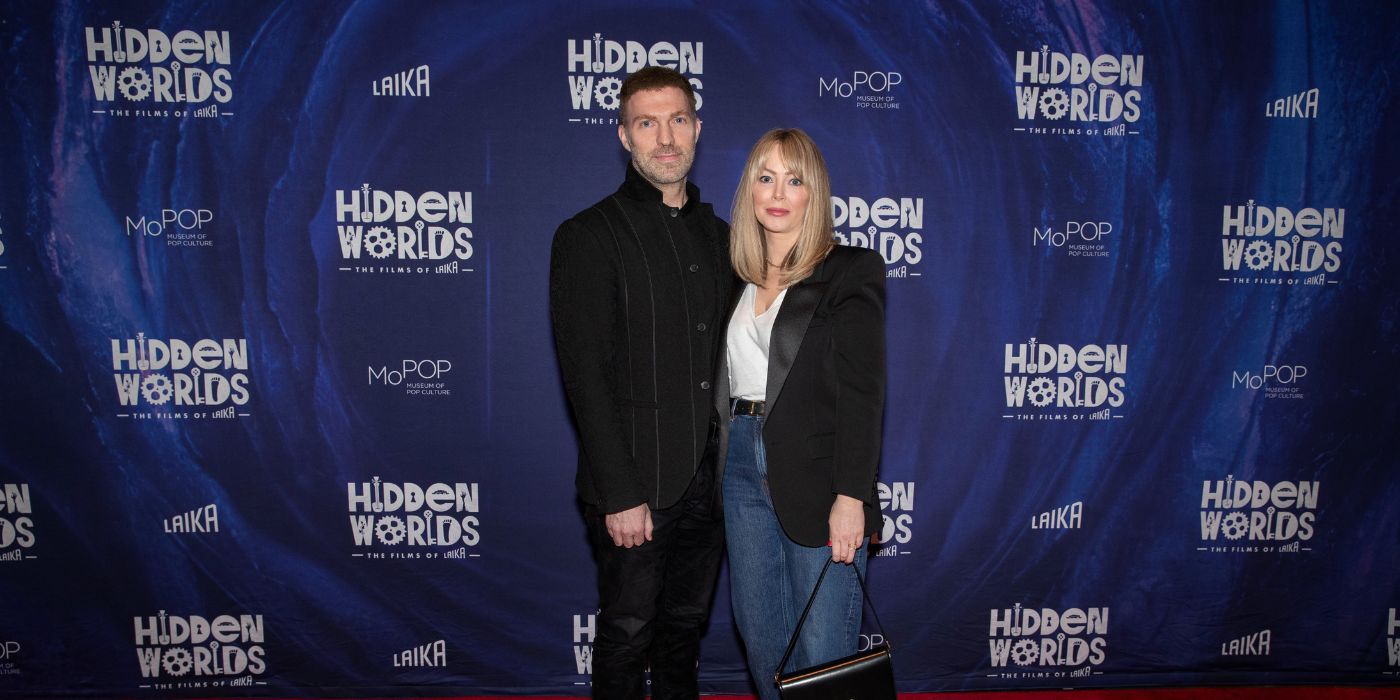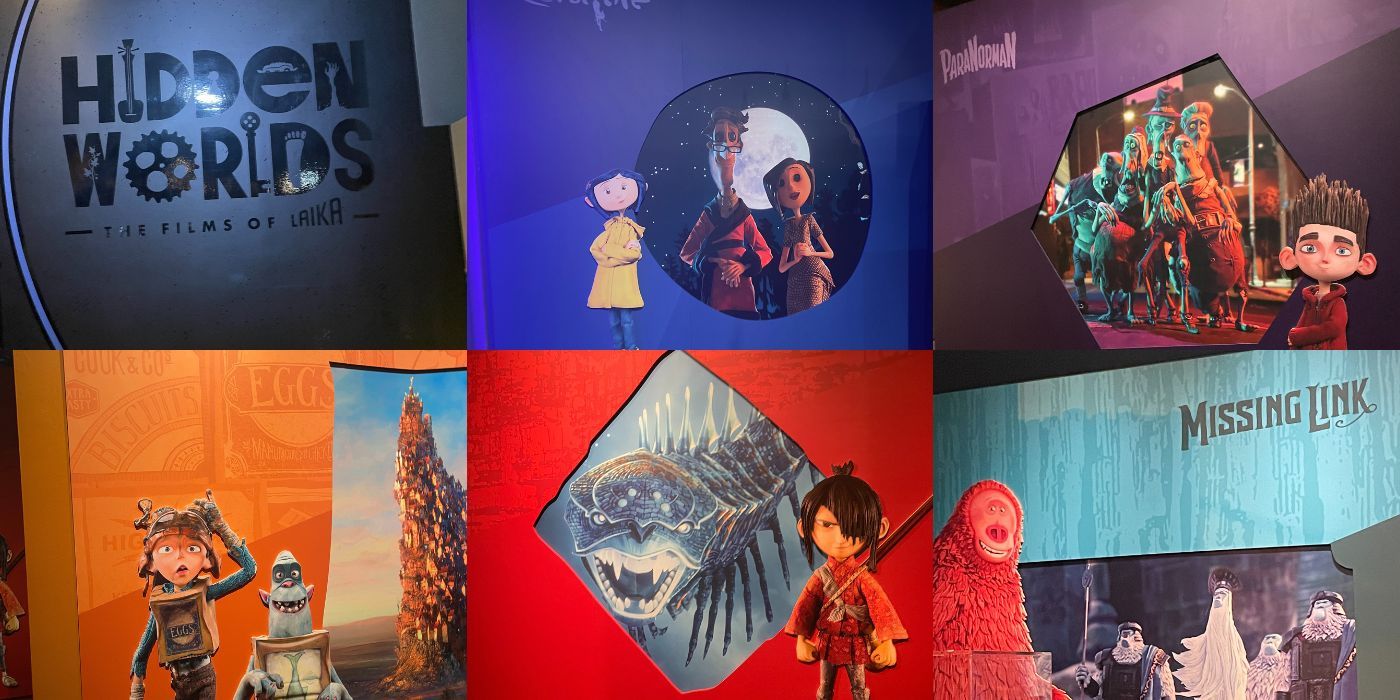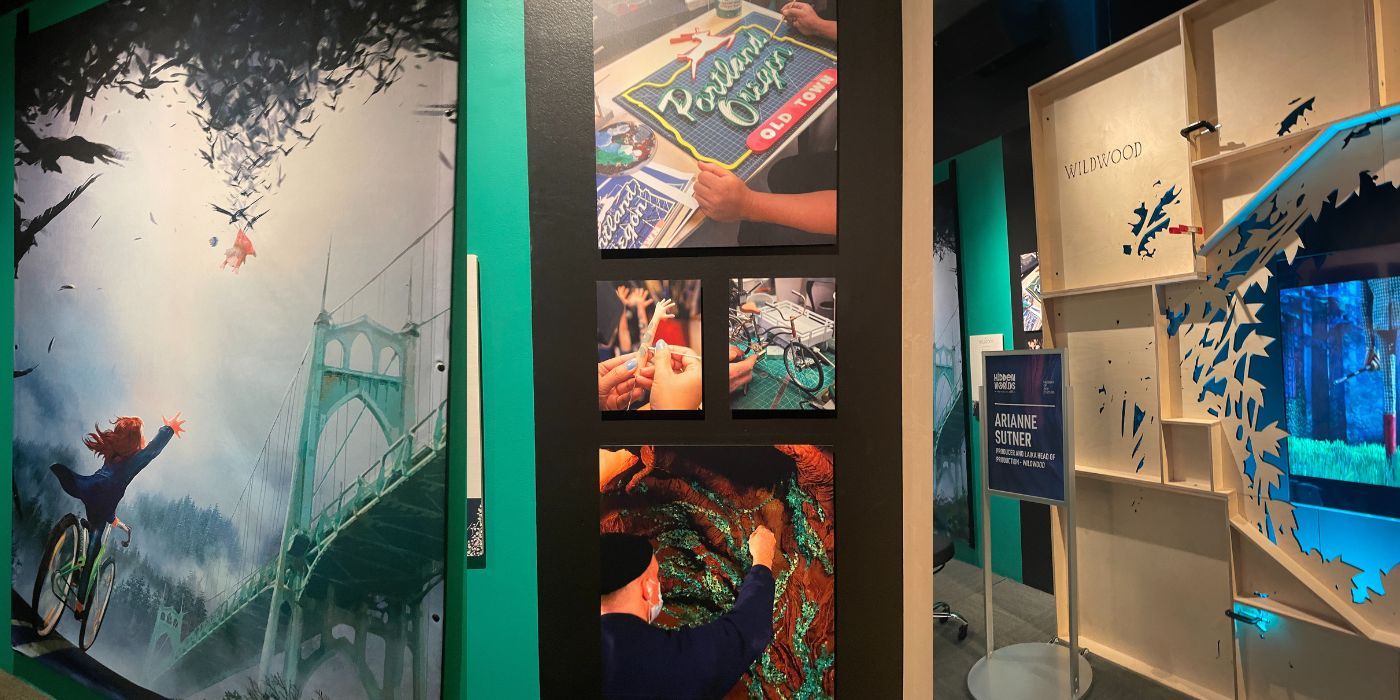You'd be hard-pressed to find another movie studio like Laika. Co-founded by Nike founder Phil Knight, his son Travis Knight, the animation studio has a winning streak that very few studios have ever matched. Their first film Coraline is one of the highest-grossing stop-motion films ever made and landed the studio its first Oscar nomination. Their following films ParaNorman, The Boxtrolls, Kubo and the Two Strings, and Missing Link also landed the studio great acclaim and more Academy Award nominations. This is a studio that is all about innovation and pushing the stop-motion medium forward with each filming brimming with innovation.
Laika has partnered up with museums before including an exhibit with the Oregon Museum of Science & Industry in 2021, but nothing to the extent of their exhibit Laika: Hidden Worlds which recently opened its doors at MoPop (The Museum of Pop Culture) in Seattle, Washington. Laika was gracious enough to fly me out to Northwestern city of Seattle to check out the exhibit and to put it simply, I was blown away.
Hidden Worlds was the brainchild of Laika CMO Dave Burke who saw MoPop as the perfect place for the new exhibit. When I asked him what drew him to MoPop he answered by saying
“MoPop is a world-class cultural institution. Certainly, I think for the local community and Seattleites in general."
Hidden Worlds Is Genuinely Something That Both Kids & Adults Can Enjoy
Right before entering Hidden Worlds, guests are greeted by a giant skeleton from Laika's fourth film, Kubo and the Two Strings. Burke clarified to me that this skeleton isn't a statue, it's a puppet, and in fact, it's the largest stop-motion puppet ever assembled weighing 900 pounds and standing at 16 feet with a 23-foot wingspan. It's quite a sight to behold and a great tease for all the excitement that the exhibit has in store for visitors.
The saying that an exhibit or a piece of media is something that both kids and adults can enjoy is thrown around quite a bit, and it's not always true. That truly is the case with Hidden Worlds, which Burke said isn't just for the young and young at heart, but for anybody, a statement I completely agree with.
Those who love stop-motion animation will be amazed by the level of detail put into the exhibit, and thankfully, for those in the Seattle area, it'll be at MoPop until April 2024, but there's always a chance it'll stay even longer. After that, Burke hinted that there is a chance that the exhibit may travel to other locations that have partnerships with MoPop.
According to Burke, the exhibit has been in the works for quite some time, even before COVID. It's been a long-time goal for the studio as they see Hidden Worlds as a way to not only to grow an audience appreciation for stop-motion but for Laika.
The Different Worlds of Laika
Hidden Worlds is divided up into 6 different sections, the first five are dedicated to a movie, while the last section is a sneak preview of Laika's next film, the highly ambitious contemporary fantasy epic Wildwood, based on the book series of the same name.
The first section centers on Coraline and is split between two sections: the normal world and the Other World, which is divided up by a giant version of the portal that the titular character crawls through in the film. In the first section, guests are greeted by the film's extensive wardrobe of the clothing worn by the puppets of the film as well as the Other World version of the Pink Palace apartments where Coraline's Other-Parents live. In one corner you can several of the film's main puppets, including ones for Coraline, and her parents. The second section, made to look like the Other World, has life-sized versions of the film's bug furniture, more wardrobe items, and puppets for the Other Mother, Other Father, Wybie, and the Ghost Children. This section also includes the garden in the film made to look like Coraline's face. It was in this section that we also learned about the facial animation on the Laika puppets, and the process behind changing the facial expressions of all the characters. Brian McLean, the director of Rapid Prototype at Laika, described the decision by animators to remove the lines in the middle of each of the puppets' faces, by painting over them whenever necessary, a method they have continued throughout all of their films.
The next section is dedicated to ParaNorman, which is made up to look like a graveyard, with a TV screen placed in between tombstones showing behind-the-scenes footage. Like the Coraline section, this area includes puppets of all the main characters, as well as the action scene involving the young heroes being pursued by a policewoman while the zombie judge has strapped himself to the roof of the van. This section also includes the set for Mr. Prenderghast's study, complete with the puppet for the character and multiple props from the film, including a bulletin board with a photo of Norman in the center. Nelson Lowry, Production Designer on the film, noted that he and the team were influenced by the real town of Salem, Massachusetts for the imaginary town of Blithe Hollow, Massachusetts, where the film was set.
The third section is themed to The Boxtrolls, while smaller in size, is also equally impressive. This includes the truck driven by the film's villain Archibald Snatcher and one of the set-pieces from the film. During the tour, Oliver Jones, the director of Practical Effects at Laika, noted that every single part of the truck can move. This section also includes interactive stations where guests can create their own stop-motion animation and use themselves as puppets. A television screen surrounded by boxes sits in the middle of the section. Puppets are also on display for most of the film's main cast, including Eggs.
The next section is devoted to Kubo and the Two Strings and has a large focus on the film's costumes. We get to see the puppets of the entire main cast as well as a life-sized replica of the origami boat from the film and a set piece of Hanzo's study that includes Beetle and Monkey. Like the other sections before it, a television screen sits in the middle, this time made to look like it was created with origami paper. Different clothing items from the characters' wardrobes are also on display. Deborah Cook, a costume designer for Laika, described her approach to designing the film's period-accurate wardrobe, including how the robes worn by Kubo's mother in the film operated as part of the puppet.
The fifth section is set to Missing Link, which according to Benoit Dubuc, the head of facial animation at Laika, was the studio's most ambitious movie at the time. This section includes all the main characters from the film, including Susan, the Sasquatch voiced by Zach Galifianakis at the center of the film, which became the heaviest and largest puppet the studio had to make for a lead character in one of their films. Several set pieces are also on display including Adelina's (Zoe Saldaña) boat cabin as well as Lionel's (Hugh Jackman) study complete with puppets for the character and Susan. This section also has an interactive section that allows guests to have a puppet's eye view of one of the many sets from the film.
The last section is much smaller and as previously mentioned serves as a sneak peek at Laika's next film Wildwood. While we don't get a look at any of the film's characters, the exhibit does have a piece of concept art, several behind-the-scenes images, and the film's cast which includes big names such as Carey Mulligan, Mahershala Ali, Angela Bassett, Jacob Tremblay, Awkwafina, and Peyton Elizabeth Lee, among many others.
Hidden Worlds is bound to become a dream come true for fans of the stop-motion studio, but it also aims to give everyone a newfound appreciation for the art form and for all the innovation Laika has brought, and it more than succeeds with that goal.




